Equation-Based Modeling
© Copyright 2014 COMSOL. COMSOL, COMSOL Multiphysics, Capture the Concept, COMSOL Desktop, and LiveLink
are either registered trademarks or trademarks of COMSOL AB. All other trademarks are the property of their
respective owners, and COMSOL AB and its subsidiaries and products are not affiliated with, endorsed by, sponsored
by, or supported by those trademark owners. For a list of such trademark owners, see
www.comsol.com/trad emarks
�
Multiphysics and Single-Physics Simulation Platform
• Mechanical, Fluid, Electrical, and Chemical Simulations
• Multiphysics - Coupled Phenomena
– Two or more physics phenomena that affect each other with
no limitation on
• which combinations
• how many combinations
•
•
Single Physics
– One integrated environment – different physics and
applications
– One day you work on Heat Transfer, next day Structural
Analysis, then Fluid Flow, and so on
– Same workflow for any type of modeling
Enables cross-disciplinary product development and a
unified simulation platform
�
Highly Customizable and Adaptable
• Create your own multiphysics couplings
• Customize material properties and boundary
conditions
– Type in mathematical expressions, combine with look-up
tables and function calls
• User-interfaces for differential and algebraic equations
• Parameterize on material properties, boundary
conditions, geometric dimensions, and more
• High-Performance Computing (HPC)
– Multicore & Multiprocessor: Included with any license
type
– Clusters & Cloud: With floating network licenses
�
Product Suite – COMSOL 4.4
�
When is Equation-Based Modeling Needed?
• Try to avoid equation-based modeling if possible!
– Using built-in physics interfaces enables ready-made postprocessing variables
and other tools for faster model setup with much lower risk of human error
• Applications that previously required equation-based
modeling but now has a dedicated physics interface:
– Fluid-Structure Interaction (Structural Mechanics Module, MEMS Module)
– Surface adsorption and reactions (Chemical Reaction Engineering Module,
Plasma Module)
– Shell-Acoustics and Piezo-Acoustics (Acoustics Module)
– Thermoacoustics (Acoustics Module)
– and many more…
�
When is Equation-Based Modeling Needed?
• Try to avoid equation-based modeling if possible!
• But: we don’t have every imaginable physics equation built-
into COMSOL (yet!). So there is sometimes a need for custom
modeling.
�
Custom-Modeling in COMSOL
• COMSOL Multiphysics® allows you to model with PDEs or
ODEs directly:
– Use one of the equation-template user interfaces
• You do *not* need to write “user-subroutines” in COMSOL
to implement your own equation!
– Benefit: COMSOL’s nonlinear solver gets all the nonlinear info with
gradients and all. Faster and more robust convergence.
�
Customization Approaches
• Four modeling approaches:
1. Ready-made physics interfaces
2. First principles with the equation templates
3. Start with ready-made physics interface and add additional terms.
4. Start with a ready-made physics interface and add your own
separate equation (PDE,ODE) to represent physics that is not already
available as a ready-made application mode
• Also:
– The Physics Builder lets you create your own user interfaces that hides the
mathematics for your colleagues and customers
�
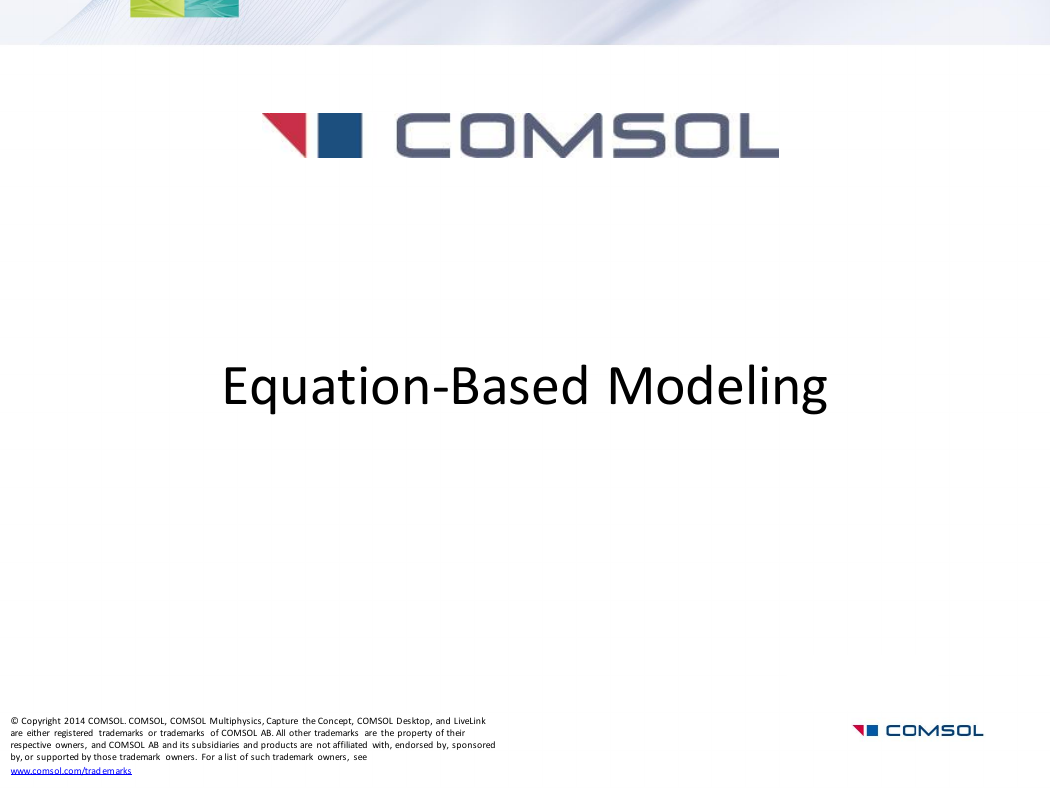
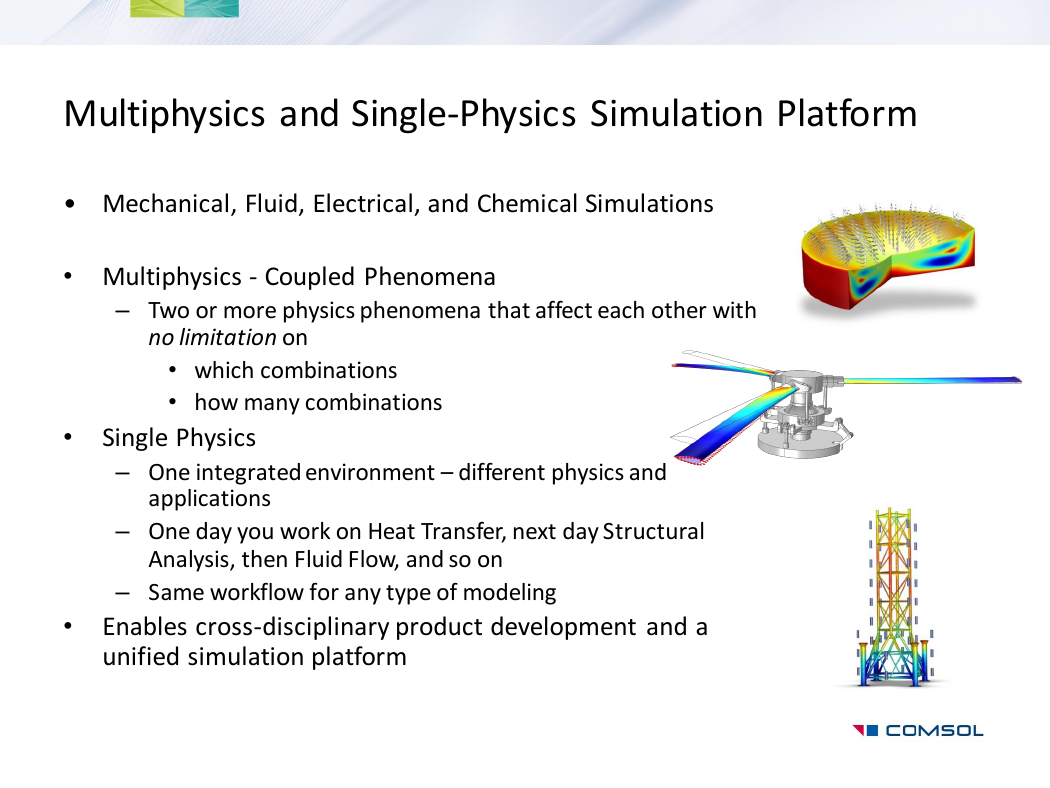
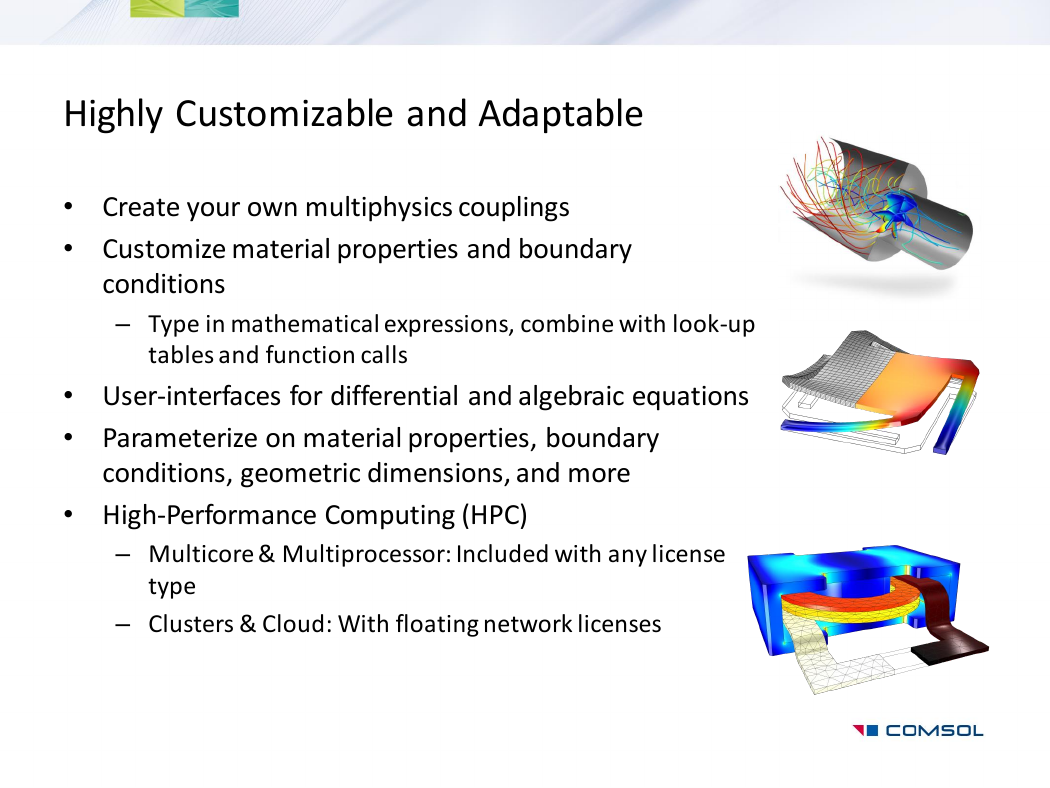
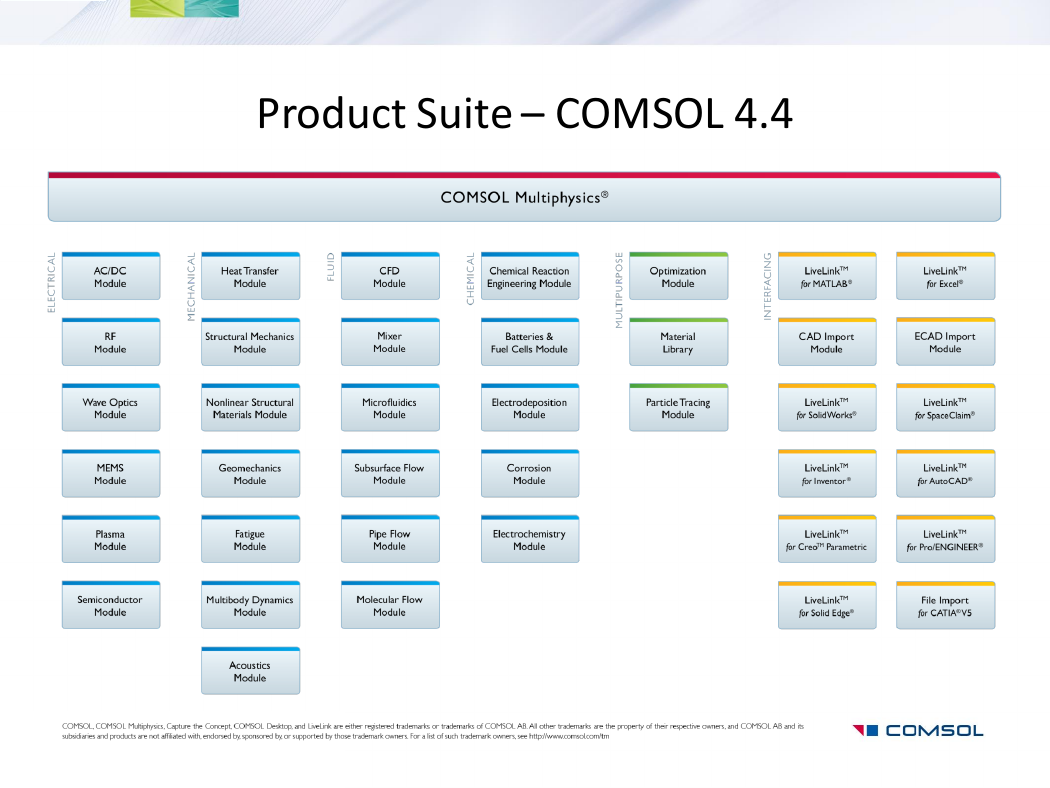
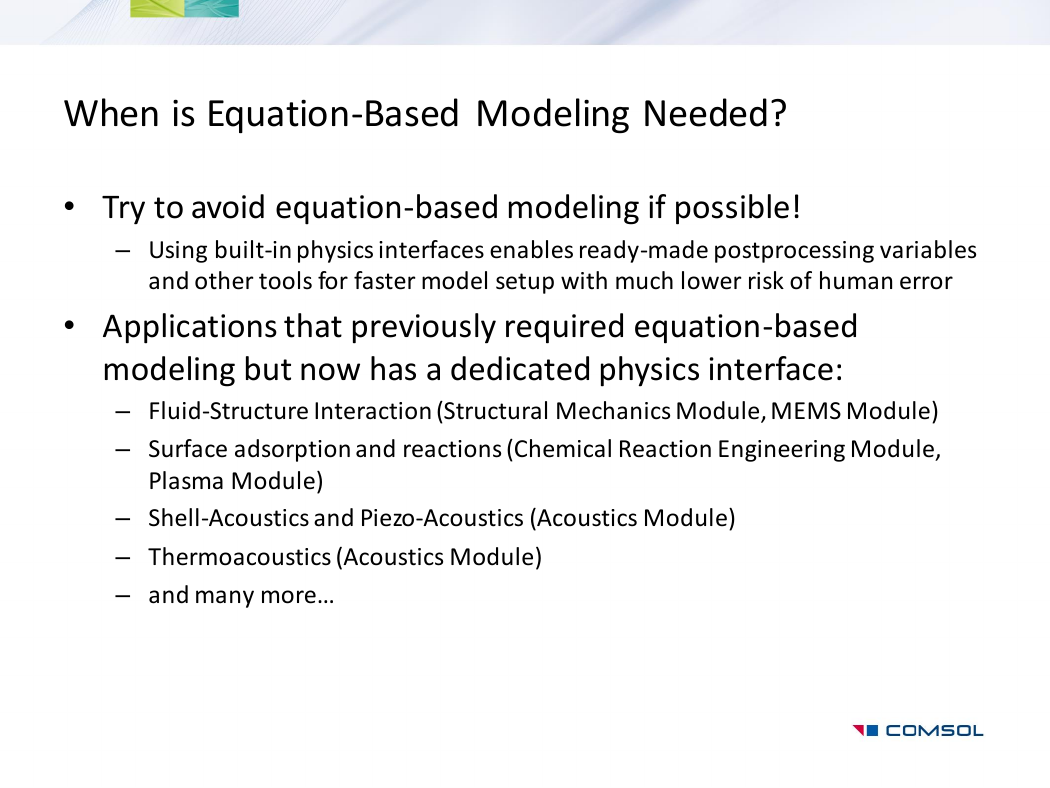
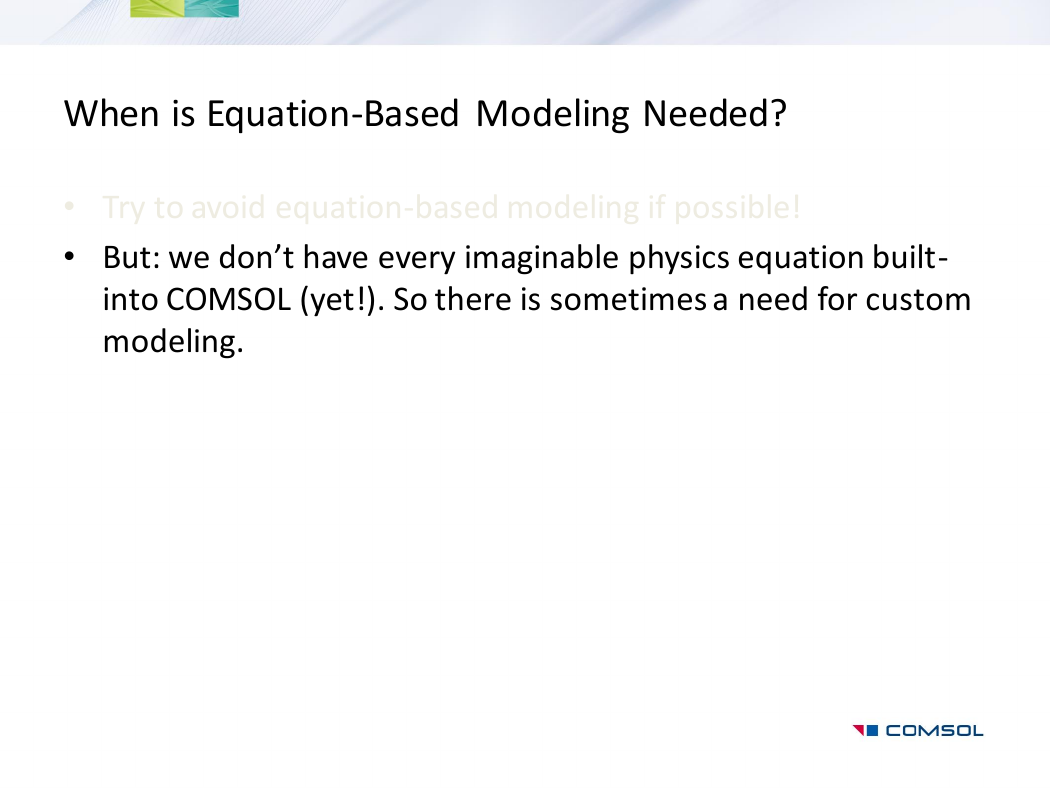
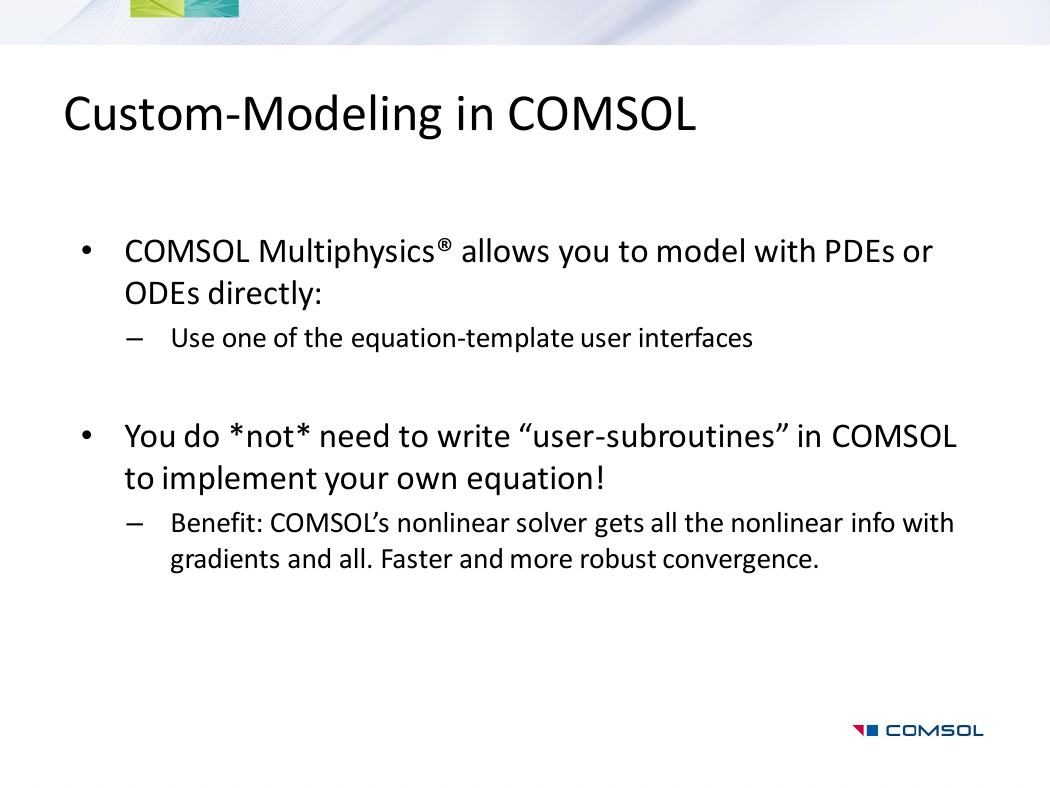
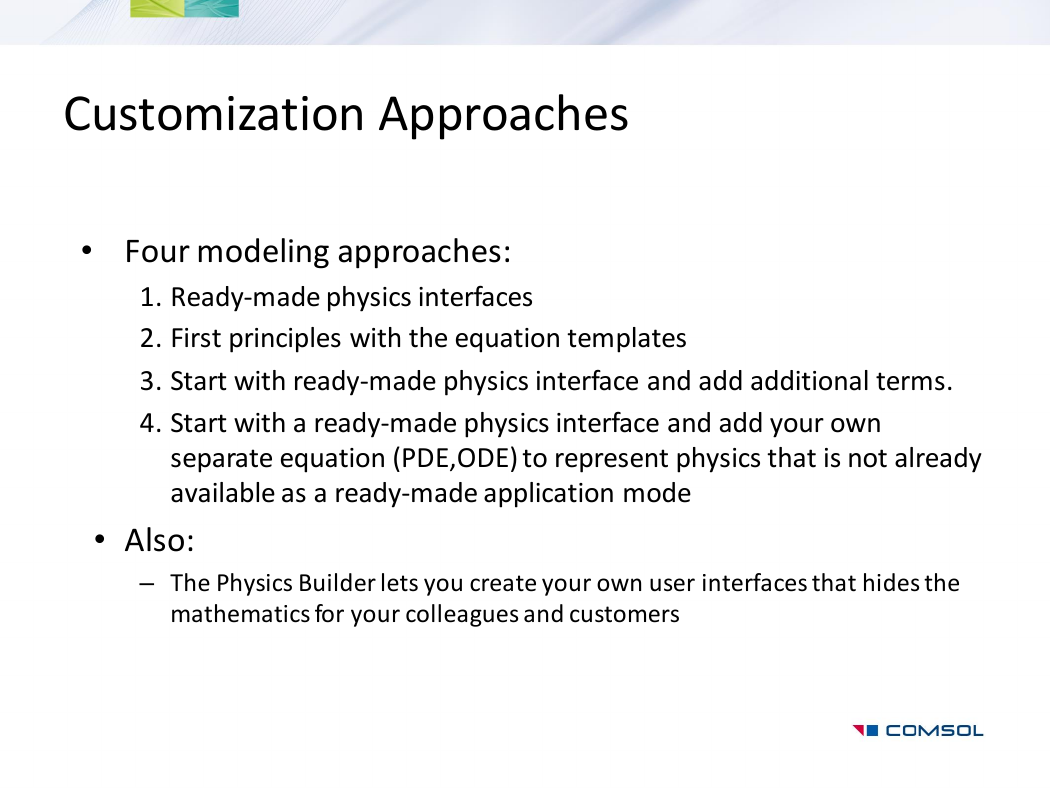








 2023年江西萍乡中考道德与法治真题及答案.doc
2023年江西萍乡中考道德与法治真题及答案.doc 2012年重庆南川中考生物真题及答案.doc
2012年重庆南川中考生物真题及答案.doc 2013年江西师范大学地理学综合及文艺理论基础考研真题.doc
2013年江西师范大学地理学综合及文艺理论基础考研真题.doc 2020年四川甘孜小升初语文真题及答案I卷.doc
2020年四川甘孜小升初语文真题及答案I卷.doc 2020年注册岩土工程师专业基础考试真题及答案.doc
2020年注册岩土工程师专业基础考试真题及答案.doc 2023-2024学年福建省厦门市九年级上学期数学月考试题及答案.doc
2023-2024学年福建省厦门市九年级上学期数学月考试题及答案.doc 2021-2022学年辽宁省沈阳市大东区九年级上学期语文期末试题及答案.doc
2021-2022学年辽宁省沈阳市大东区九年级上学期语文期末试题及答案.doc 2022-2023学年北京东城区初三第一学期物理期末试卷及答案.doc
2022-2023学年北京东城区初三第一学期物理期末试卷及答案.doc 2018上半年江西教师资格初中地理学科知识与教学能力真题及答案.doc
2018上半年江西教师资格初中地理学科知识与教学能力真题及答案.doc 2012年河北国家公务员申论考试真题及答案-省级.doc
2012年河北国家公务员申论考试真题及答案-省级.doc 2020-2021学年江苏省扬州市江都区邵樊片九年级上学期数学第一次质量检测试题及答案.doc
2020-2021学年江苏省扬州市江都区邵樊片九年级上学期数学第一次质量检测试题及答案.doc 2022下半年黑龙江教师资格证中学综合素质真题及答案.doc
2022下半年黑龙江教师资格证中学综合素质真题及答案.doc